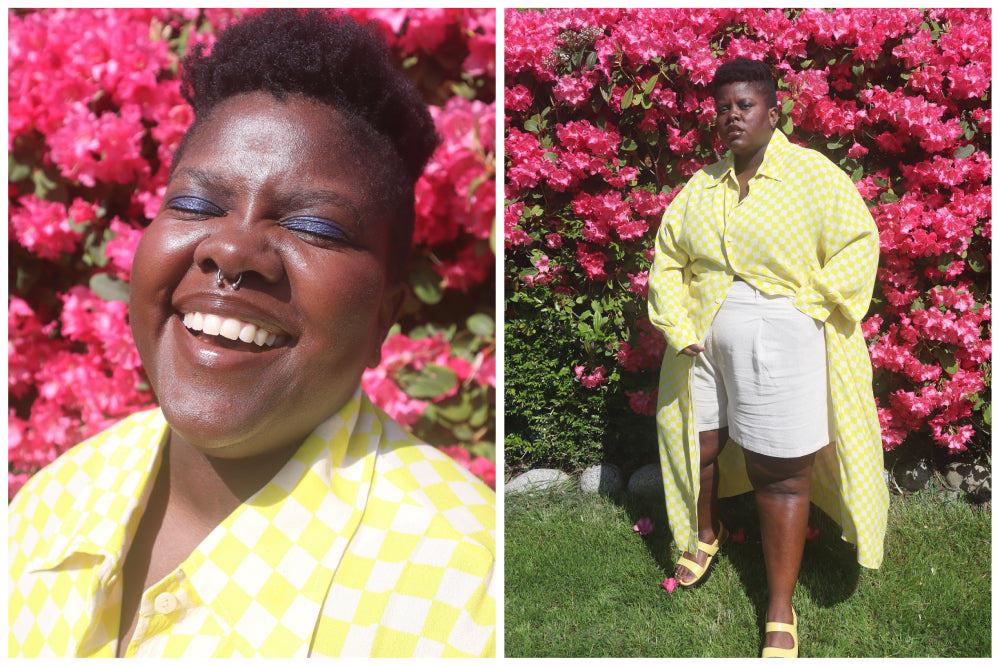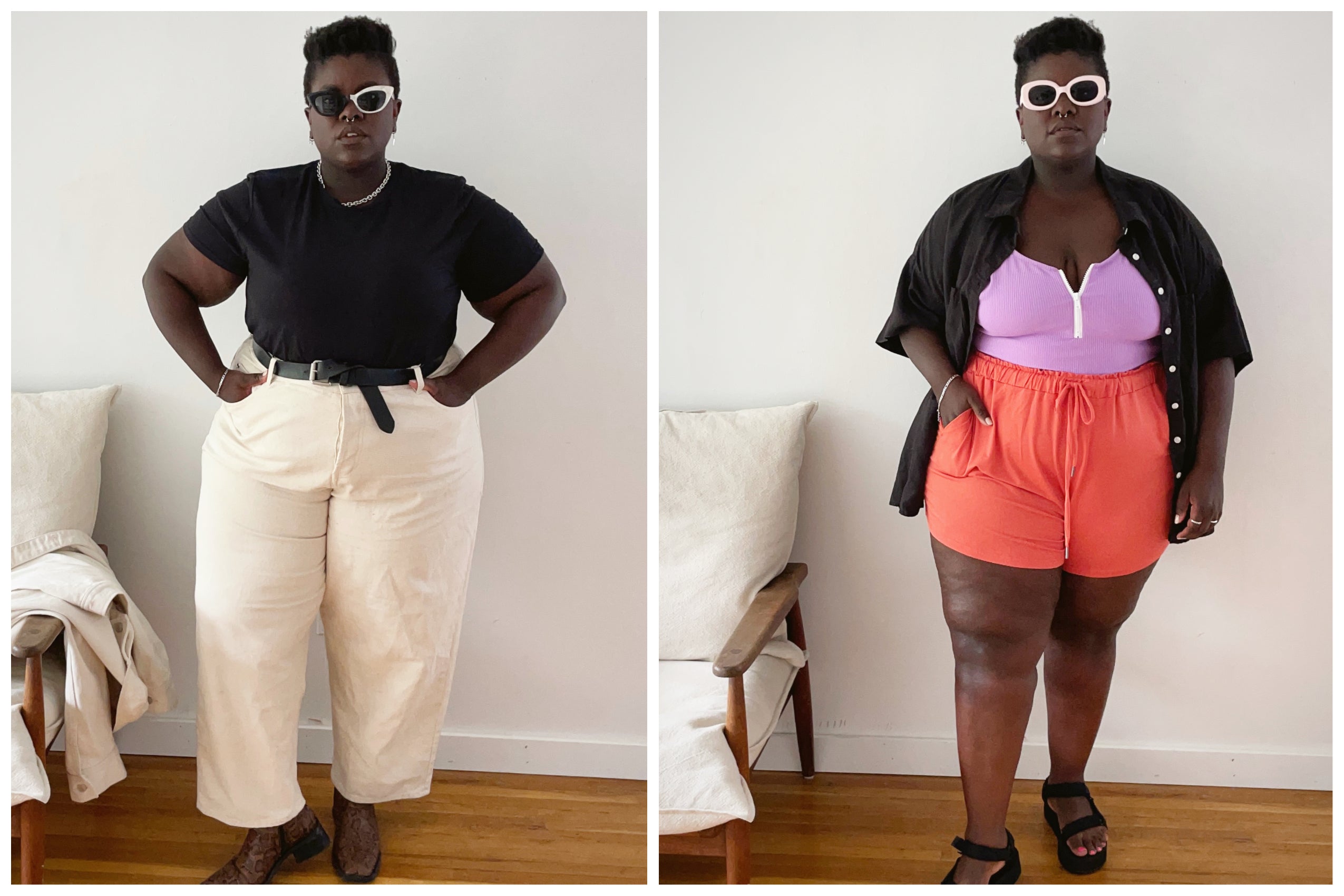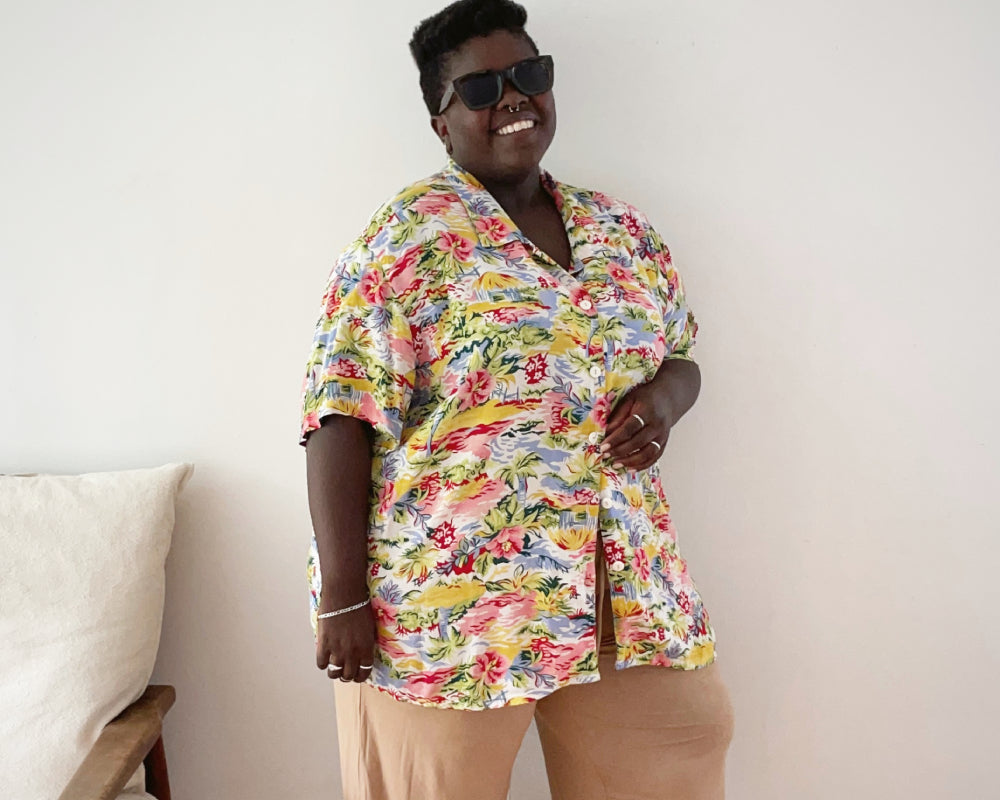I think it’s a blessing I’ve alway been able to access expression through clothing. I’ve been infatuated with clothing since being a small child. And, by some miracle, my immigrant Ugandan parents let me pick out my looks from quite a young age, around 6 or 7.
Looking back, I can see the narrowed view of gendered expression through clothing. It was a conservative evangelical home, and I was socialized as a girl. Gender roles were rigid and in plain sight, and my penchant for frocks played right into my assignment as a young woman.
I often looked to 1990s pop culture for fashion inspiration. Utterly infatuated with sitcom protagonists, I pined after the clothes I saw on Family Matters, Saved by the Bell and Full House. D.J. Tanner’s tiered skirts always caught my eye; I also admired Uncle Jesse’s wardrobe but didn’t think too much of it.
Watching Grease in the second grade, I was as much in love with Danny’s iconic greaser looks as I was with Sandy’s sock hop attire — two sides of expression, but at that time, I only consciously tended to one.
I can recall a brief period in childhood when I asserted I didn’t want to wear dresses anymore. In hindsight, this feels like an acknowledgement of the person I knew was, perhaps finding a way to connect to my non-binary self, before I had the words and the understanding.
The rigidity of my femininity and its importance felt mammoth sized, something I could not escape. Something that became even harder to dodge as I moved through pubescence. It seemed the world had decided exactly what my gender should be, would always be, and exactly how I should adhere to it.
Fast forward to my mid 20s, I’m working in fashion. I’m blogging my outfits, as well as working as a vintage picker. I’m living my little vintage gal *fantasy*, but I could not shake the feeling there was something in myself I wasn’t addressing.
I had come out when I was 25, and although it was a great relief, I could still feel the internal agonizing over a nagging, nebulous, something. It was around this time I became friends with more folks who were trans and non-binary. I slowly realized how much internalized transphobia I needed to unpack.

I held such a rigidity towards the “right” way to be non-binary, the “right” androgyny, the “right” gender expressions. I began to realize what the weight of my assumptions meant for my own gender journey — I wasn’t even allowing myself the room or space to explore how I felt.
This lack of exploration ties into the fashion industry at large. Clothing is still largely designed, produced, and marketed as being divided along the gender binary. Despite the glaring truth that clothing, as an inanimate object, has no inherent gender.
Hundreds of thousands of dollars are spent on advertising that reinforces who can wear what. Unnecessary gendering of items and gendered language in marketing can contribute to folks not feeling able to express their true selves.
There has been an uptick of unisex collections and brands. As a non-binary person working in the fashion industry, I’m cautiously hopeful. I’m yet to see many brands shift their marketing to something more gender neutral, which to me feels like a better step to take.
Showing clothing on folks of many genders, removing overly gendered language from copy, and, perhaps, not separating apparel by gender is an evolution I'd like to see. As the societal perceptions of gender expand, it feels like a natural time to reconsider the norms in place.
For me, clothing has been such a balm; a medium to express the facets of my non-binary gender. There are high-femme moments, there’s f-boy styling, there’s my own mix of what feels deeply right to me — even if that’s not within the norms or imaginations of others.
Androgyny doesn’t have to be monochrome baggy pieces; it can mean a boldly hued sundress and badass boots. My personal style is an expression of creativity; I take pride in the ways I’m able to honour my own identity through clothing.
There is no need for me to run from dresses if I want to wear them. My gender is not dependent on external norms of how I should present the body I inhabit. And it’s not just me! Everyone should be given the space to discover their own relationship to gender — I promise the self discovery will be worth the journey.
You can dress in anything you damn well please. And that’s the future of fashion I want to see.

